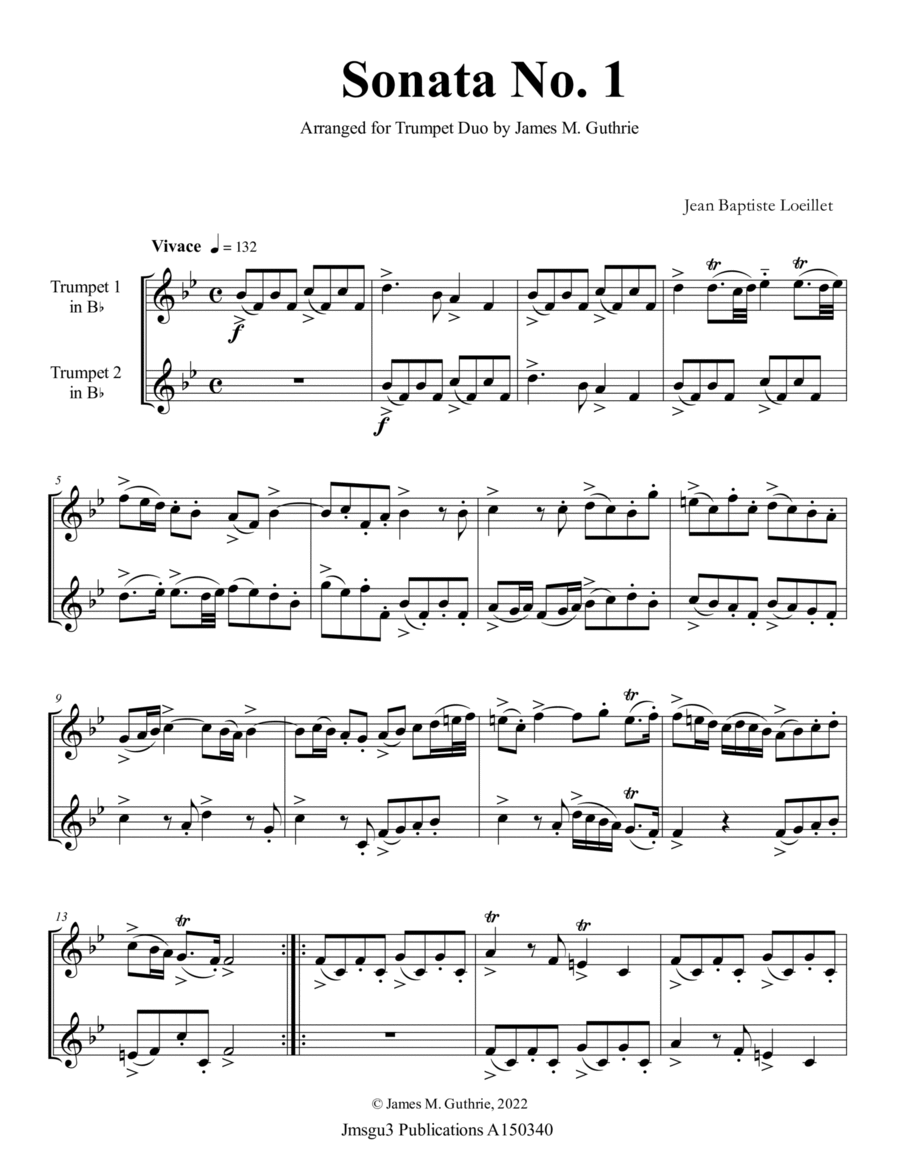Trumpet Duet Trumpet - Level 2 - Digital Download SKU: A0.612846 Composed by Jean Baptiste Loeillet of Ghent (1688 – 1720). Arranged by James M. Guthrie. Baroque,Contest,Festival,Standards,Traditional,Wedding. Score. 59 pages. Jmsgu3 #222042. Published by jmsgu3 (A0.612846). John Baptist Loeillet, a Flemish Baroque composer, wrote six sonatas for flute and basso continuo in his Op. 5 No. 2. This work is widely considered to be some of his most significant compositions, and they are still performed today.The sonatas are divided into three movements each, with two slow movements and one faster one. The flute part is very demanding, as Loeillet often wrote in the high register, and the accompanying basso continuo part provides a solid foundation for the piece. The music has an emotional intensity that was characteristic of the Baroque era, and it features various ornamentations, like trills and mordents. The influence of Corelli can be heard in the contrapuntal textures, and the melodic lines are often based on the scales and modes of the period.Loeillet's Op. 5 No. 2 is a beautiful and captivating work, and its timelessness is a testament to its quality. It has been transcribed and adapted for other instruments, and it remains a popular choice for many classical musicians.Contents:Sonata No. 1 Duration: 9:45 Score: 8 pages 1. Vivace 2. Affetuoso e Poco Vivace 3. Allegro 4. Largo 5. AllegroSonata No. 2 Duration: 16:00, Score: 12 pages 1. La¬rgo 2. Allegro 3. Largo 4. Vivace 5. Vivace 6. Largo 7. GigaSonata No. 3 Duration: 19:20, Score: 14 pages 1. Vivace 2. Largo 3. Gavotto – Allegro 4. Sarabanda 5. Allegro 6. Largo 7. Menuet 8. Giga - AllegroSonata No. 4 Duration: 11:08, Score: 10 pages 1. Vivace 2. Gavott 3. Largo 4. Allegro 5. Sarabanda - Largo 6. AllegroSonata No. 5 Duration: 7:49, Score: 7 pages 1. Largo 2. Allegro 3. Largo 4. GavottSonata No. 6 Duration: 9:42, Score: 8 pages 1. Andante 2. Adagio 3. Allegro 1 4. Allegro 2.
